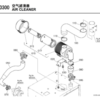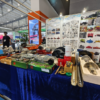Bearings are devices used to support and reduce mechanical friction, commonly found in rotating and reciprocating mechanical components. Depending on their structure and purpose, bearings can be classified into various types.

Deep groove ball bearings

Needle roller bearings

Sealed bearings

Angular contact ball bearings (single row, double row), etc.
Deep groove ball bearings are a common type of bearing characterized by deep grooves between the inner and outer rings, allowing them to withstand significant radial loads. Needle bearings utilize elongated needle rollers as rolling elements, making them suitable for high loads and confined spaces. Sealed bearings offer dust and water resistance, making them ideal for use in harsh environments. Angular contact ball bearings, which can be single-row or double-row, have a contact angle that allows them to simultaneously support axial and radial loads and are often used in pairs.
In the bearing market, there are many well-known brand suppliers, such as Japans NTN, THK, KOYO, and NSK, as well as SKF from Gothenburg, Sweden. These brands are recognized for their high-quality products and reliable performance.
The manufacturing process of bearings typically includes forging, heat treatment, and grinding. Forging involves shaping raw materials into bearing ring blanks to enhance material density and flow. Heat treatment is a high-temperature process that improves the hardness and wear resistance of bearings. Grinding is a critical step to ensure bearing precision, achieving the required dimensions and shape accuracy through grinding and other machining methods.
Bearings are widely used in various machinery, particularly in the drive components of harvesters, such as gearboxes, parts of alternators, starters, and gearboxes. Some cutting tools and platforms, like the DC70 model, also utilize bearings. In areas significantly affected by external factors, sealed bearings are more commonly used to prevent a reduction in bearing lifespan.
The processing technology of bearings involves steps such as cutting, heat treatment, and precision machining. Cutting processes include turning, milling, and drilling, requiring high-precision machine tools and cutting tools to ensure the dimensional and shape accuracy of bearings. The heat treatment process includes quenching, tempering, and normalizing to enhance the hardness and wear resistance of bearings. The precision machining phase includes grinding and polishing to further improve the accuracy and surface quality of the bearings.
In summary, bearings are essential components in mechanical equipment, providing support and reducing friction. They can be classified into various types based on their structure and purpose, and different brands of bearing suppliers offer high-quality products. The manufacturing process, including forging, heat treatment, and grinding, is crucial for ensuring the quality and performance of bearings.






Add comment